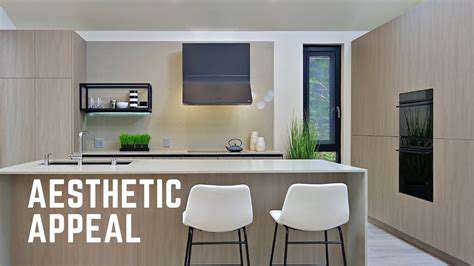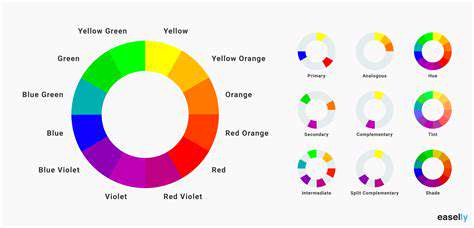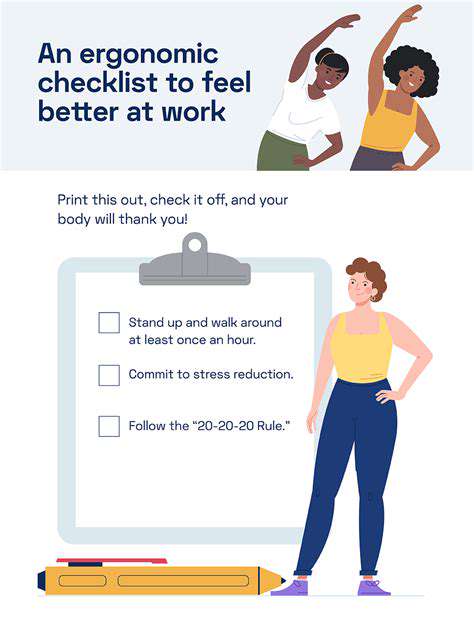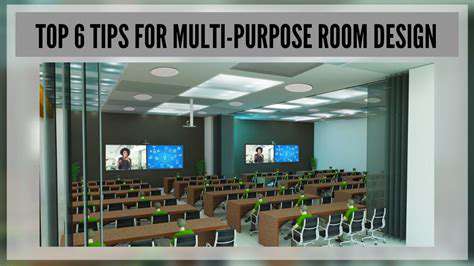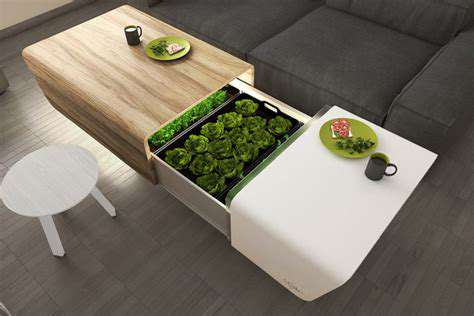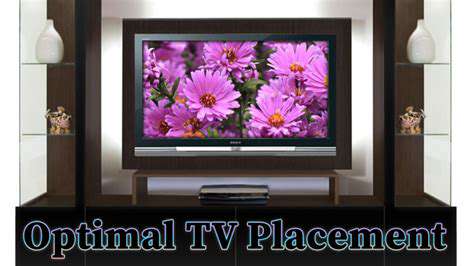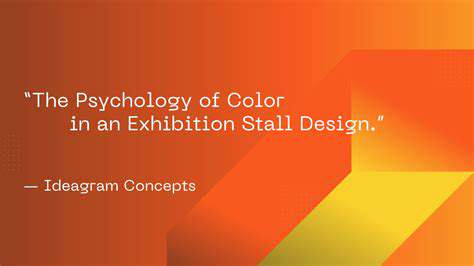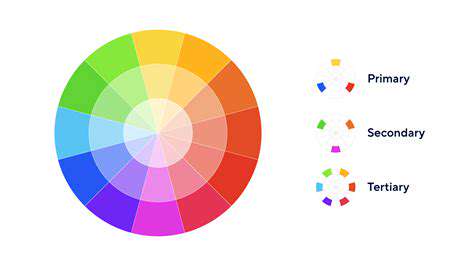How to Organize a Study Room for Maximum Productivity and Comfortable Reading
An ergonomic study setup is vital for both physical comfort and cognitive performance. Invest in a comfortable chair that supports your back and allows for proper posture. A height-adjustable desk and a monitor positioned at eye level can prevent neck and back strain. Adequate lighting, whether natural or artificial, is also key to reducing eye fatigue and maintaining focus throughout study sessions.
Proper lighting is just as important as the chair and desk. Harsh fluorescent lighting can be tiring, while dim lighting can make it hard to see your notes clearly. A combination of natural light and adjustable desk lamps can provide the perfect balance.
Decluttering for Mental Clarity
A cluttered study room can lead to a cluttered mind. Regular decluttering is essential for maintaining focus and reducing distractions. Keep your workspace tidy, removing unnecessary items and organizing materials efficiently. Clear surfaces promote a sense of calm and allow you to concentrate on the task at hand without feeling overwhelmed by visual clutter.
Consider using storage solutions to keep your materials organized. File folders, binders, and drawer organizers can help you locate resources quickly and efficiently. This helps maintain a calm and productive environment.
Maximizing Natural Light and Ventilation
Natural light has a profound impact on mood and cognitive function. Position your study desk near a window to take advantage of natural light. Sunlight can boost energy levels, improve alertness, and create a more pleasant and productive study environment. Good ventilation is equally important. Fresh air helps to maintain concentration and prevents feelings of stagnation or fatigue.
Opening a window or using a fan can significantly improve air quality. In addition to mood improvement, this can help prevent the buildup of stale air, which can lead to headaches and difficulty concentrating.
Utilizing Technology for Enhanced Learning
Technology can be a powerful tool for optimizing your study space. Consider using a noise-canceling headset to block out distracting sounds, especially if you're studying in a shared space. Invest in a high-quality monitor and a comfortable keyboard and mouse to improve focus and reduce eye strain. Utilizing digital tools for note-taking and organization can further enhance efficiency and productivity.
Utilize productivity apps to manage your time and tasks. Note-taking apps can help you organize your thoughts and ideas effectively. Consider using digital resources for research and learning. Properly integrating technology into your study space can optimize your learning experience.
Incorporating Personal Touches for Motivation
Personalizing your study space can significantly impact motivation and engagement. Incorporate elements that inspire you and create a positive learning environment. Display motivational quotes, inspiring artwork, or photos of loved ones. Adding plants can improve air quality and add a touch of nature to your study area. A personalized space can foster a sense of ownership and pride, which can be a powerful motivator during challenging study periods.
Creating a space that reflects your personality and interests can help make studying feel less like a chore and more like a rewarding experience. Remember, a motivating environment is key to achieving your academic goals.
Lighting and Atmosphere for Enhanced Focus
Choosing the Right Lighting
Effective lighting is crucial for a productive study environment. Harsh overhead lighting can be fatiguing and lead to eye strain, while insufficient lighting can hinder concentration and make it difficult to see your notes clearly. Consider a combination of ambient, task, and accent lighting to create a balanced and comfortable study space. Ambient lighting, such as a soft lamp or a well-placed ceiling fixture, provides general illumination. Task lighting, such as a focused desk lamp, targets the specific area where you'll be working, eliminating shadows and glare. Accent lighting, such as strategically placed wall lamps or string lights, can add a touch of visual interest and improve the overall ambiance without overwhelming the space.
Experiment with different light sources to find what works best for you. Warm-toned light bulbs often promote relaxation and create a more calming atmosphere, whereas cooler-toned bulbs might be better suited for tasks requiring more focus and concentration. Adjusting the height and angle of your desk lamp can significantly impact the amount of light falling on your work area. Remember to consider the color temperature of your bulbs, as different temperatures can affect your mood and productivity. Ultimately, the goal is to create a space where the lighting enhances your focus and minimizes distractions.
Creating a Calming Atmosphere
The atmosphere in your study room plays a significant role in your ability to concentrate. A cluttered or chaotic space can lead to mental distractions, making it harder to focus on your studies. Creating a calming atmosphere involves minimizing visual and auditory distractions. Keep your workspace tidy and organized, removing unnecessary items that might draw your attention away from your work. Consider using soft colors for your walls and decor to create a sense of peace and tranquility. Soft textures, such as plush rugs or comfortable cushions, can also contribute to a more relaxing environment. These elements create a visual and tactile experience that promotes relaxation and facilitates focus.
Incorporating natural elements can also help to create a calming atmosphere. Consider placing a plant or two in your study area to bring a touch of nature indoors. Soft, instrumental music or white noise can also create a calming backdrop without being overly stimulating. Even a few minutes spent appreciating nature outside your window can have a positive impact on your focus and mood. The goal is to design a space that promotes relaxation and mental clarity, enabling you to focus on your studies without feeling overwhelmed.
The Role of Natural Light and Ventilation
Natural light is a powerful tool for enhancing focus and boosting mood. Maximize the use of natural light by positioning your study desk near a window. Direct sunlight can be beneficial, but be mindful of glare and adjust your desk position accordingly. Natural light can significantly improve your mood and reduce eye strain, contributing to a more focused and productive study session. Ventilation is equally important in maintaining a comfortable and healthy study environment. Opening a window, using a fan, or investing in an air purifier can help circulate fresh air and eliminate stale or stuffy air, which can lead to feelings of fatigue and reduced concentration.
Good ventilation and natural light can foster a more positive and productive study environment. Fresh air can improve alertness and cognitive function, while natural light contributes to a sense of well-being and reduces stress. A well-ventilated and naturally lit study room can significantly improve your overall focus and concentration throughout the study session. Ultimately, these factors contribute to a more positive and productive study experience.
Consider the impact of the time of day on natural light. Morning light often promotes alertness and energy, while evening light can be more conducive to relaxation. Understanding these nuances can help you optimize your study environment for maximum productivity throughout the day.
Ergonomics and Comfort for Extended Study Sessions

Ergonomic Principles for Extended Use
When engaging in extended use of any device or activity, prioritizing ergonomics is crucial for maintaining physical well-being. Proper posture and positioning are paramount to avoiding strain and discomfort. This includes maintaining a neutral spine, avoiding slouching or hunching, and ensuring that your wrists, hands, and forearms are supported in a natural alignment. Understanding and applying these ergonomic principles can significantly reduce the risk of developing musculoskeletal issues over time.
Considering the specific nature of the task is also important. Different activities demand different ergonomic setups. For example, if you're working at a computer for extended periods, ensuring a suitable chair, monitor placement, and keyboard layout is vital. The goal is to minimize stress on joints and muscles.
Importance of Posture and Support
Maintaining proper posture is essential for preventing pain and discomfort during extended use. Poor posture can lead to chronic pain and strain in the neck, back, and shoulders. Providing adequate support for the body, especially the back and neck, is critical for sustained comfort. Good posture and support help distribute weight evenly, reducing strain on individual muscles and joints.
Utilizing ergonomic tools and equipment, like adjustable chairs and specialized keyboards, can significantly enhance posture and support during extended activities. This is particularly crucial when engaging in activities for prolonged durations, such as working on a computer or performing repetitive tasks.
Optimal Seating Arrangements
Choosing the right chair is crucial for long-term comfort and well-being. An adjustable chair allows for personalized customization to accommodate individual body types and preferences. Features like lumbar support, adjustable height, and armrests are essential components for promoting good posture and reducing discomfort during prolonged use. The chair should provide sufficient back support to maintain a neutral spine position.
Consider the materials of the chair as well. A chair made of breathable materials, such as mesh or high-quality fabric, can promote better airflow, preventing overheating and discomfort, especially during extended use.
Impact of Lighting and Environment
Adequate lighting is critical for maintaining focus and reducing eye strain during extended use. Glare and harsh lighting can contribute to discomfort and fatigue, making it harder to maintain concentration over time. Ensure that the lighting environment is well-balanced and adjustable to accommodate various tasks and preferences.
The overall environment plays a crucial role in promoting comfort. Maintaining a comfortable temperature, adequate ventilation, and minimizing distractions are important factors to consider for extended periods of activity. A well-organized and clutter-free workspace can significantly reduce stress and improve focus.
Assessing Individual Needs and Preferences
Understanding individual body types and preferences is essential for tailoring ergonomics to maximize comfort and reduce the risk of discomfort during extended use. Some people may find certain postures or seating arrangements more comfortable than others. Pay attention to personal preferences and adjust the setup to suit your needs. Experiment with different positions and configurations to find what works best for you.
Regular breaks and movement are also important considerations. Even with the best ergonomic setup, taking regular breaks and engaging in light movement can help maintain comfort and prevent stiffness and fatigue, especially during extended periods of focused activity.
Importance of Regular Breaks and Movement
Taking regular breaks is essential for maintaining comfort and preventing fatigue during extended use. Breaks allow the body to rest and recover, reducing the risk of developing musculoskeletal issues. These breaks should involve stretching, light movement, and changing positions to promote blood circulation and alleviate muscle strain. Regular breaks can also enhance focus and productivity.
Incorporating short, frequent breaks into your routine can significantly improve your overall well-being during extended activities. This will contribute to a more productive and comfortable experience.
Personalization and Motivation: Transforming Your Study Room into a Sanctuary

Personalization in Learning
Personalized learning experiences are crucial for effective knowledge acquisition. By tailoring educational content and methods to individual student needs, strengths, and learning styles, instructors can foster a more engaging and productive learning environment. This approach acknowledges that students learn at different paces and possess diverse backgrounds and preferences. Personalizing learning materials ensures that the content resonates with each student, leading to a deeper understanding and improved retention of information. It also allows for a more flexible and adaptable learning pathway, catering to the unique needs of each learner.
Implementing personalized learning strategies requires careful consideration of individual student characteristics. This includes assessing learning styles, identifying learning gaps, and understanding motivational factors. By gathering comprehensive data on student performance and engagement, educators can create customized learning plans that address specific needs and facilitate optimal learning outcomes.
Motivational Strategies in Education
Motivation is a key element in student success. A motivated student is more likely to actively participate in learning activities, persist through challenges, and achieve their academic goals. Effective motivational strategies in education can significantly enhance student engagement and foster a positive learning environment. This involves creating a supportive and encouraging classroom climate, recognizing and rewarding student achievements, and fostering a sense of ownership and responsibility in the learning process.
Various motivational strategies can be implemented to engage students. These include setting clear learning goals, providing regular feedback, and encouraging collaboration among peers. Creating opportunities for student choice and autonomy in their learning process can also significantly boost motivation and engagement. Incorporating elements of gamification and real-world applications into the curriculum can also help students connect their learning to their lives and understand the practical value of the knowledge.
The Impact of Personalization on Motivation
Personalization and motivation are intrinsically linked. When students feel that their learning experiences are tailored to their individual needs and preferences, their motivation to engage with the material increases significantly. A sense of ownership and control over one's learning journey is a powerful motivator. Personalization allows students to actively participate in shaping their education, fostering a deeper sense of connection and engagement with the subject matter. This active involvement, in turn, fuels intrinsic motivation.
When learning is personalized, students are more likely to see the relevance of the material to their lives and future goals. This enhanced relevance directly impacts motivation. A personalized approach also allows for differentiated instruction, which caters to diverse learning styles and paces. Differentiation, in turn, prevents feelings of frustration and boredom, which are often significant demotivators in the learning process.
Creating Personalized Learning Paths
Developing personalized learning paths requires a proactive approach to understanding each student's unique needs. Teachers need to gather data on student strengths, weaknesses, learning styles, and interests. This data can then be used to create customized learning experiences that address individual needs and facilitate optimal learning outcomes. This process involves creating a framework for flexible learning pathways that adapt to each student's progress.
Implementing personalized learning paths requires a shift in pedagogical approaches. Teachers need to move away from a one-size-fits-all model and embrace a more individualized approach. This involves using a variety of assessment techniques, from traditional tests to more creative and interactive methods, to gauge student understanding and tailor instruction accordingly. Technology plays a key role in supporting personalized learning paths, allowing for dynamic content delivery and adaptable assessment methods.
Measuring the Effectiveness of Personalized Learning
Evaluating the effectiveness of personalized learning initiatives is crucial to ensure that these approaches are achieving their intended goals. Key metrics include student engagement, learning outcomes, and overall satisfaction with the learning experience. This evaluation process should include both quantitative and qualitative data. Quantitative data can be collected through standardized tests, while qualitative data can be gathered through student feedback surveys, interviews, and observations.
A comprehensive evaluation should also consider the impact of personalized learning on student motivation and self-efficacy. This requires careful monitoring of student attitudes towards learning and their perceived ability to succeed. By tracking these metrics, educators can identify areas for improvement and refine their strategies to maximize the benefits of personalized learning for all students. Regular reviews and adjustments are essential for ongoing optimization.

